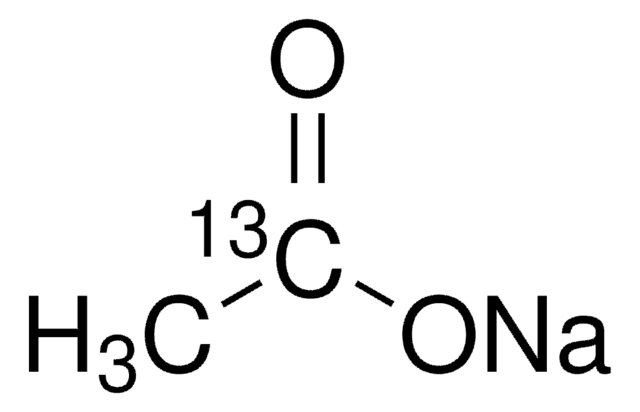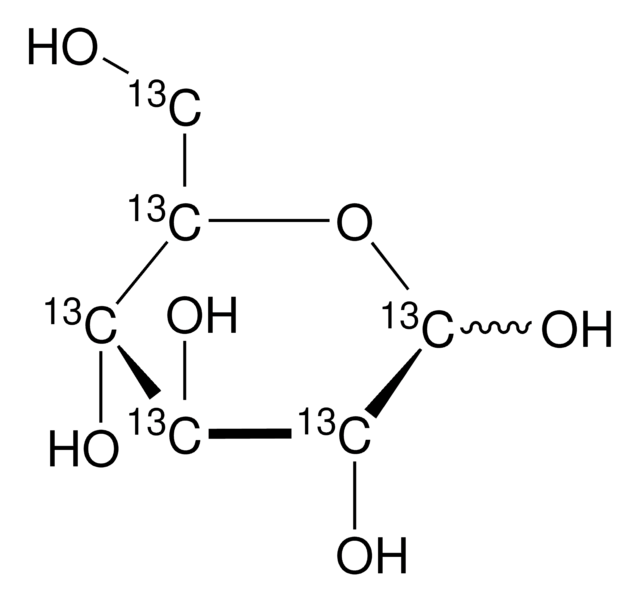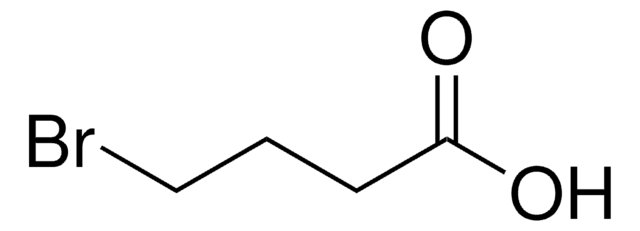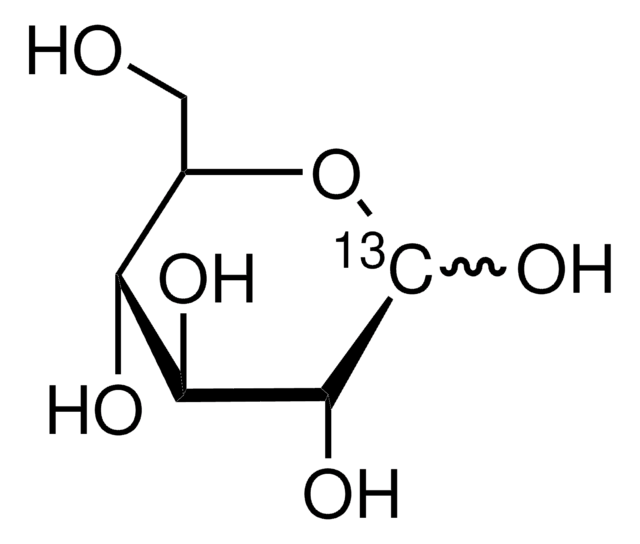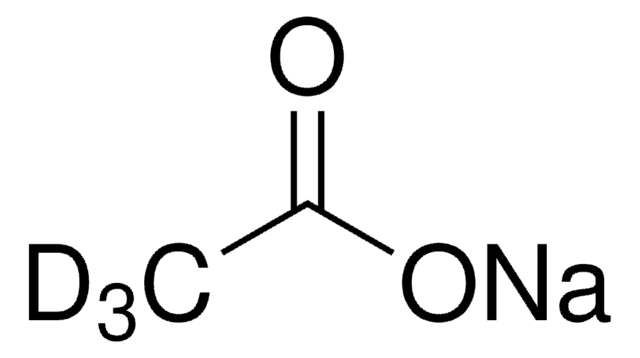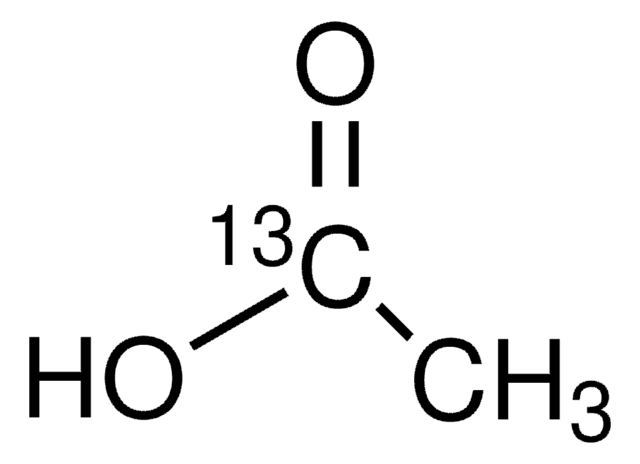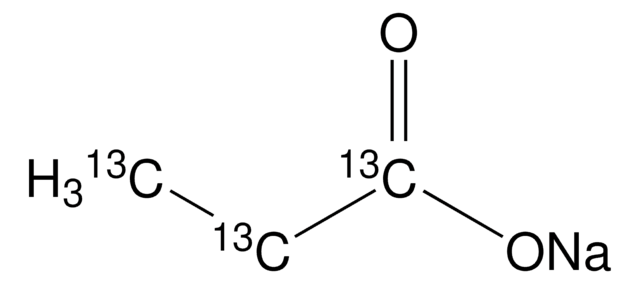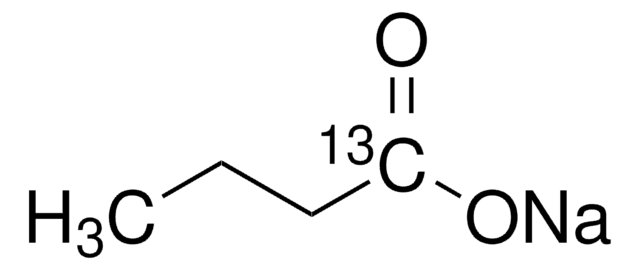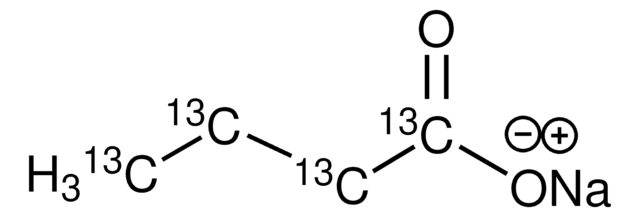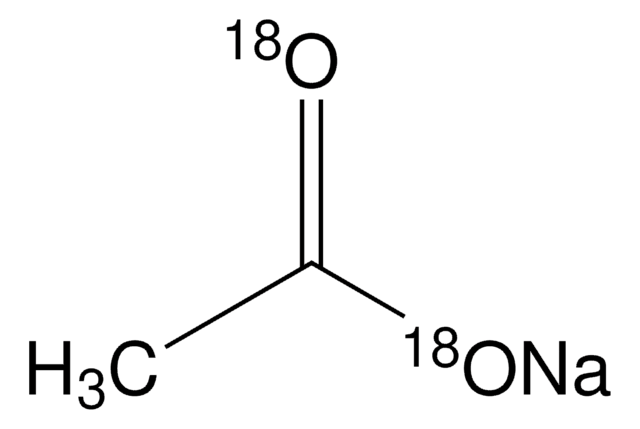282014
Sodium acetate-13C2
99 atom % 13C
Synonyme(s) :
13C Labeled acetic acid sodium salt, 13C Labeled sodium acetate, Acetic acid-13C2 sodium salt
About This Item
Produits recommandés
Pureté isotopique
99 atom % 13C
Niveau de qualité
Technique(s)
bio NMR: suitable
protein expression: suitable
Pf
>300 °C (dec.) (lit.)
Changement de masse
M+2
Chaîne SMILES
[Na+].[13CH3][13C]([O-])=O
InChI
1S/C2H4O2.Na/c1-2(3)4;/h1H3,(H,3,4);/q;+1/p-1/i1+1,2+1;
Clé InChI
VMHLLURERBWHNL-AWQJXPNKSA-M
Vous recherchez des produits similaires ? Visite Guide de comparaison des produits
Conditionnement
Code de la classe de stockage
11 - Combustible Solids
Classe de danger pour l'eau (WGK)
WGK 1
Point d'éclair (°F)
Not applicable
Point d'éclair (°C)
Not applicable
Équipement de protection individuelle
Eyeshields, Gloves, type N95 (US)
Faites votre choix parmi les versions les plus récentes :
Déjà en possession de ce produit ?
Retrouvez la documentation relative aux produits que vous avez récemment achetés dans la Bibliothèque de documents.
Les clients ont également consulté
Articles
Solid-state NMR on Larger Biomolecules; Sigma-Aldrich.com
Dynamic Nuclear Polarization (DNP) is a phenomenon by which high spin polarization, typically derived from a bath of free radical electrons, is transferred to a nuclear spin bath, enhancing the difference between the nuclear energy levels and thereby producing dramatically enhanced NMR signals for detection.
Sigma-Aldrich.com presents an article concerning MRI/MRS and the use of isotopes in hyperpolarization.
Contenu apparenté
Compounds labeled with stable isotopes are used in Magnetic Resonance Imaging to render visible metabolic changes in the body. The goal of this application is the early diagnosis and treatment of neuropsychiatric disorders, cancer, and other disease states.
Notre équipe de scientifiques dispose d'une expérience dans tous les secteurs de la recherche, notamment en sciences de la vie, science des matériaux, synthèse chimique, chromatographie, analyse et dans de nombreux autres domaines..
Contacter notre Service technique